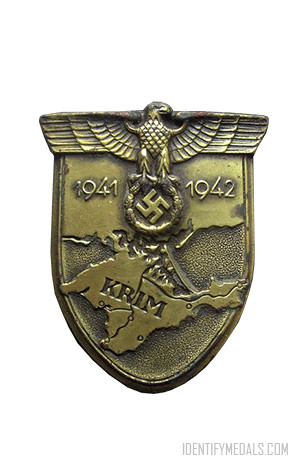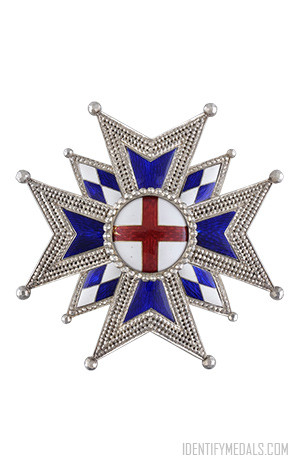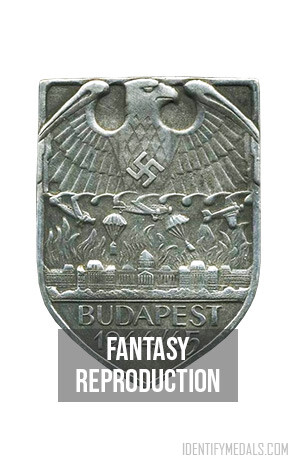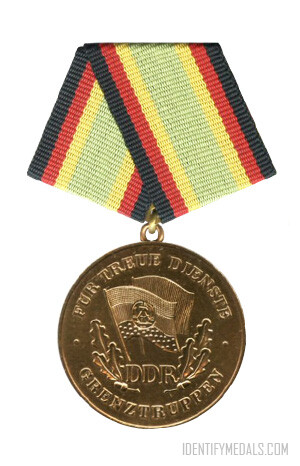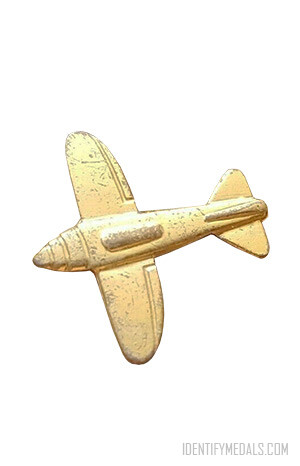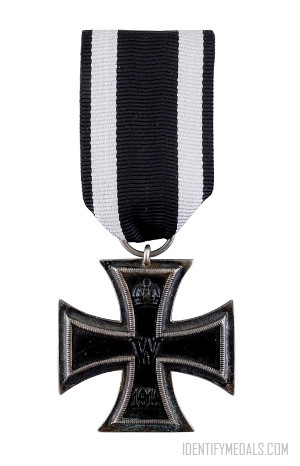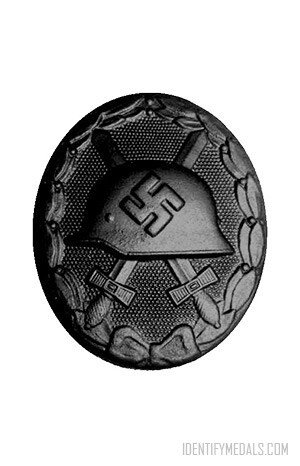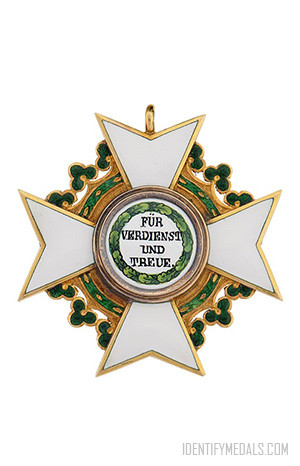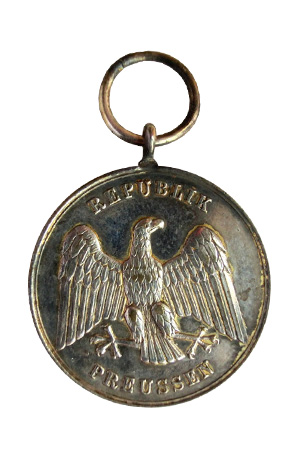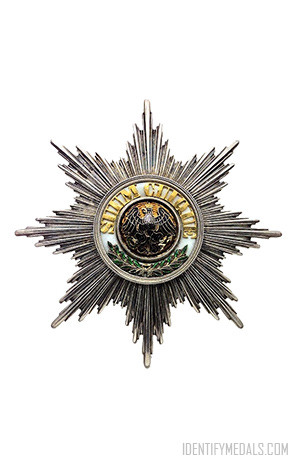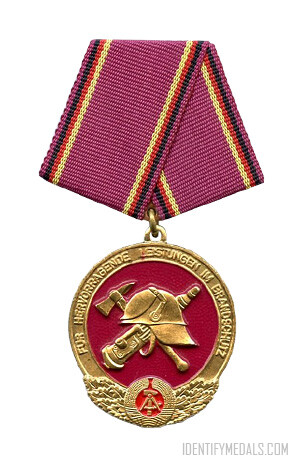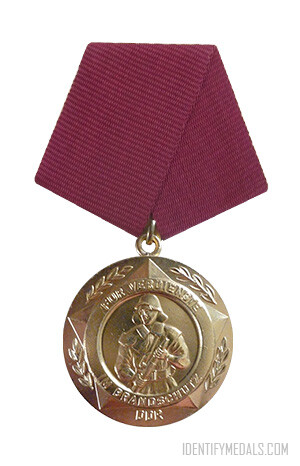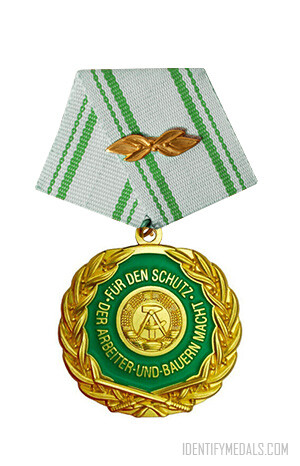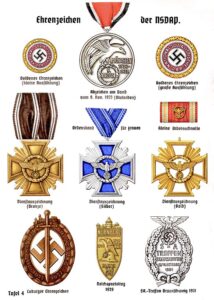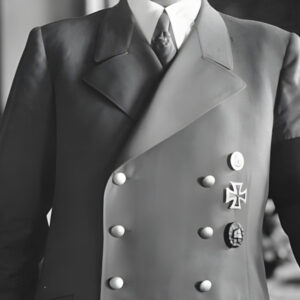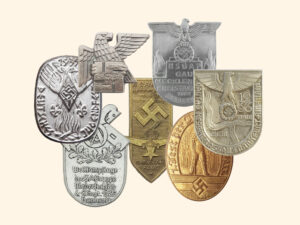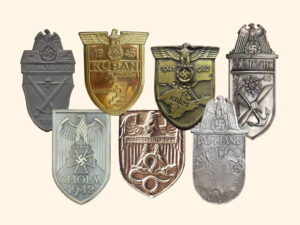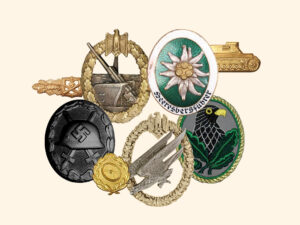- Time Period: Nazi Germany (Interwars Period, World War II)
- Institution: 25 July 1942
- Country: Germany
The Crimea Shield (or Krimschild in German) is a World War II German military decoration instituted on 25 July 1942 and awarded to military personnel who fought against Soviet Red Army forces and captured the Crimea region between 21 September 1941 and 4 July 1942 under the command of Generalfeldmarschall Erich von Manstein.
The Wehrmacht’s Army Group South advanced through the Crimean peninsula between the Autumn of 1941 and Summer of 1942. The hostilities that ended with the German capture of Sevastopol on 4 July 1942.
The Crimea Shield was the most widely distributed of the various German ones, with approximately 250,000 of them being awarded. It could be awarded to all members of the Wehrmacht and to Luftwaffe and other units affiliated to the campaign in the specified dates. The following conditions needed to have been met for the award:
- Served in the area for at least 90 days; or
- Been wounded while serving in the area; or
- Had been engaged in at least one major operation against the enemy.
Romanian troops serving in the Crimea were also eligible for the award.
The Crimea Shield Design
The Crimea shield is headed, on the obverse, by the German eagle clutching a laurel wreath surrounding a swastika. Flanking the eagle are the dates 1941 and 1942, which represent the start and end dates of the campaign. This sits on the backdrop of the Crimean peninsula, where the fighting took place, which has the word KRIM stamped across it.
A special pure-gold version of the Crimea Shield was also produced and first bestowed upon Marshal Ion Antonescu, the military dictator of Romania, at the end of the Siege of Sevastopol on 3 July 1942. It was awarded to him in Bucharest by Erich von Manstein, on Adolf Hitler’s behalf. The second and last Golden Krimschild was awarded to von Manstein himself, on 24 November 1942.
More Nazi Germany Shields (Ärmelschilde)
These campaign shields were awarded to members of the Wehrmacht (the unified armed forces of Nazi Germany from 1935 to 1945). They were given for participation in specific battles or campaigns and worn on the left upper arm of the uniform jacket.
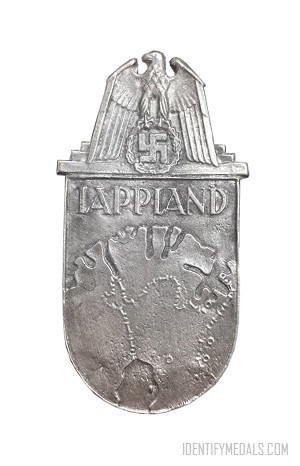
The Lappland Shield
The Lappland Shield (Lapplandschild) is a World War II German military decoration awarded to military personnel who fought in Lapland.
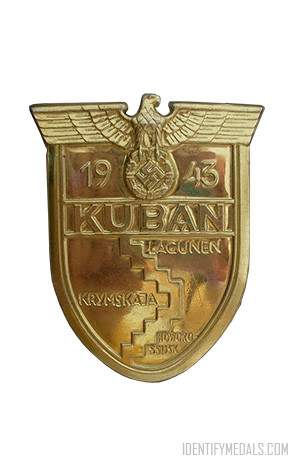
The Kuban Shield
The Kuban Shield is a World War II military decoration awarded to those who fought at the Kuban bridgehead in the Soviet Union.
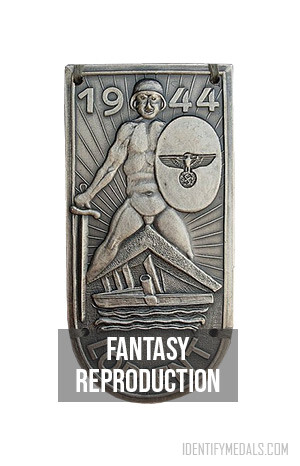
The Lorient Shield (Projected)
The Lorient Shield (Lorientschild) was a projected WW2 Third Reich decoration planned for participants in the Siege of Lorient (1944–45).
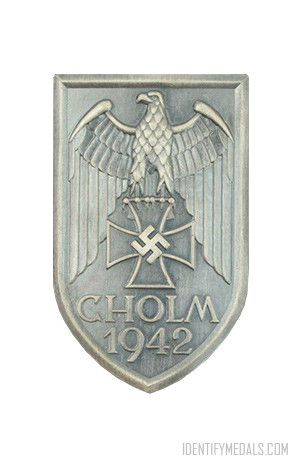
The Cholm Shield
The Cholm Shield (Cholmschild) is a World War II German military decoration awarded to those who fought in the Cholm Pocket.

